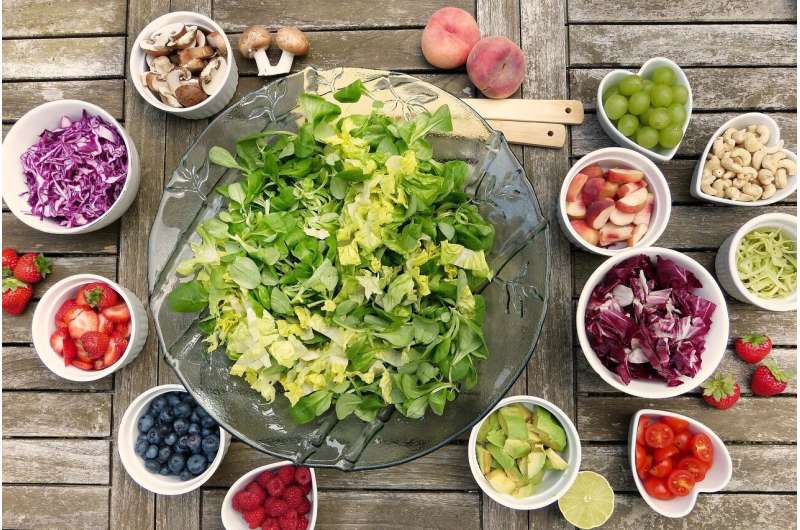Getting children to eat their greens? Both parents need to set an example

A positive example set by both the mother and the father promotes the consumption of vegetables, fruit and berries among 3–5-year-old children, according to a new study from the University of Eastern Finland. The study explored the association of the home food environment and parental influence with the consumption of vegetables among kindergarten-aged children. The findings were published in Food Quality and Preference.
Children eat inadequate amounts of vegetables, fruit and berries across Europe and elsewhere, too. As the health and nutrition benefits of these foods are well-known, increasing their consumption among children is a challenge many countries are struggling with. Dietary habits also track from childhood to adulthood, and the period of early childhood is critical for adapting to a diet rich in greens.
The researchers studied the consumption of vegetables, fruit and berries, and the family's home food environment, through a survey taken by parents. The study looked at 114 kindergarten-aged children and their parents (100) in Finland. Raw and cooked vegetables and fruit and berries were analysed separately.
The researchers found that to a certain degree, the consumption of vegetables is affected by different factors than the consumption of fruit and berries. Maternal example was associated with the consumption of raw and cooked vegetables as well as with the consumption of fruit and berries. Paternal example, on the other hand, was the strongest for cooked vegetables.
"This shows that teaching children to eat their greens is not something mothers should be doing alone. A positive example set by both parents is important, as is their encouragement of the child," Researcher and Nutritionist Kaisa Kähkönen from the University of Eastern Finland says.
The study also showed that dinner is the most important meal at home when it comes to teaching children to eat vegetables. The families participating in the study often ate dinner together, highlighting the role of parental influence on the development of children's dietary choices and preferences.
Dinner constitutes a daily opportunity to serve vegetables in a variety of different forms: as the main course, as a side dish, and as salad.
"Variation can be created by serving raw vegetables, such as the ever-popular cucumber and tomato, accompanied by cooked ones. In fact, many root vegetables, cabbages and squashes are best served cooked," Kähkönen says.
When it comes to eating fruit, evening snacks were the most important meal.
The study shows that many families still eat less vegetables, fruit and berries on average than would be beneficial in view of health promotion. Cooked vegetables and berries were the least eaten food items among the study population.
The Institute of Public Health and Clinical Nutrition at the University of Eastern Finland studies how food education in early childhood can support good nutrition among children and promote the establishment of healthy dietary habits.
More information: K. Kähkönen et al. Fruit and vegetable consumption among 3–5-year-old Finnish children and their parents: Is there an association?, Food Quality and Preference (2020). DOI: 10.1016/j.foodqual.2020.103886



















